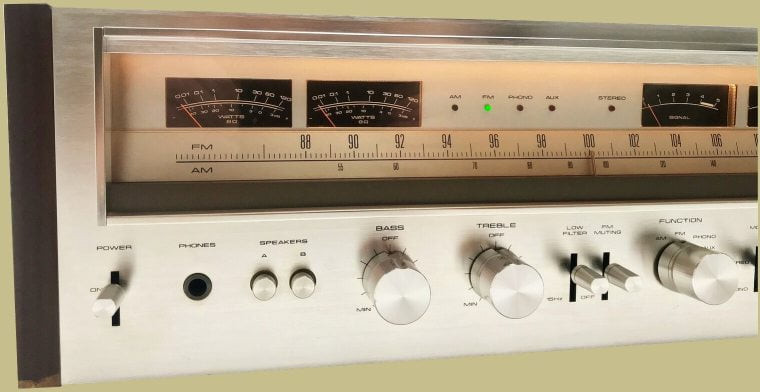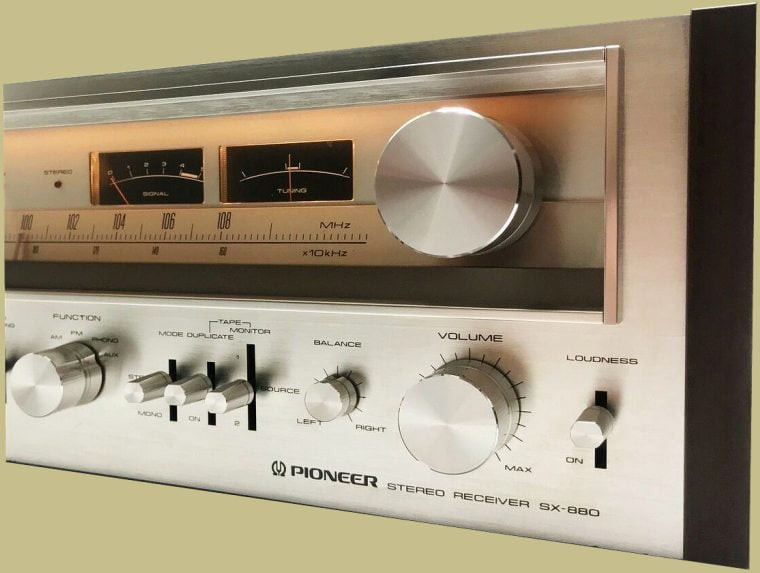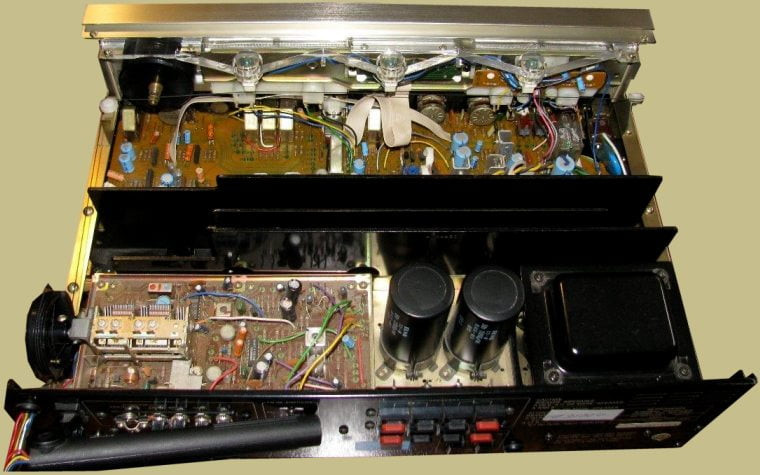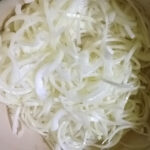The Pioneer SX-xx80 series followed the SX-xx50 line, and the Pioneer SX-880 stands as a prime example of this generation of Pioneer receivers, marking the final entry in the 800 series. Introduced around 1978, it carried a retail price of approximately $425.
 Pioneer SX-880 receiver front panel showcasing its dark faced meters with white lettering for improved visibility.
Pioneer SX-880 receiver front panel showcasing its dark faced meters with white lettering for improved visibility.
A noticeable aesthetic shift from the preceding series is the SX-880’s adoption of dark-faced meters with white lettering. This design alteration was implemented to enhance meter visibility. In terms of performance, the Pioneer SX-880 delivers 60 watts per channel with a total harmonic distortion of 0.05%. It is designed to accommodate speaker impedance as low as 4 Ohms.
 Close-up of the Pioneer SX-880's control knobs, highlighting the classic design and user interface of this vintage stereo receiver.
Close-up of the Pioneer SX-880's control knobs, highlighting the classic design and user interface of this vintage stereo receiver.
Delving into its technical features, the SX-880’s tuning section incorporates a 3-gang variable capacitor tuner. Further features include comprehensive tone control:
- Dedicated Bass and Treble controls, complemented by a tone defeat option for bypassing these controls.
- A Low Cut filter, engineered to eliminate ultra-low frequency noise below 15Hz, effectively reducing turntable rumble and similar low-pitch disturbances.
- Independent left and right power meters, providing visual feedback on channel output.
- FM Muting functionality to suppress inter-station noise when tuning through FM frequencies.
- Stereo and Mono mode selection for versatile audio playback.
- Two Tape input/output sets, facilitating connection and recording with tape decks.
- A Phono input for direct connection of turntables.
- An Aux input to accommodate other line-level audio sources.
- A Duplicate switch, likely for tape dubbing operations.
- A Loudness switch to enhance bass frequencies at lower listening levels.
 Internal components of the Pioneer SX-880 receiver, illustrating its discrete design and build, unlike lower models using ICs.
Internal components of the Pioneer SX-880 receiver, illustrating its discrete design and build, unlike lower models using ICs.
It’s widely acknowledged that the xx80 series, including the Pioneer SX-880, exhibits a slight decrease in build quality compared to the earlier SX-xx50 series. For instance, the Pioneer SX-850, the model directly preceding and replaced by the SX-880, weighed a substantial 42 pounds (19.1 Kg), whereas the SX-880 weighs considerably less at 27 pounds (12.2 Kg). The physical dimensions of the SX-880 are 19 inches in width, 12.75 inches in depth, and 5.5 inches in height.
However, the SX-880 has notable advantages. Crucially, unlike the SX-780 and lower models in the series, the SX-880 employs a discrete component design and avoids the use of integrated circuits (ICs) in its amplifier section. This is a significant benefit for long-term serviceability and reliability, as many of these older ICs are now difficult to source, making repairs challenging when they fail. The discrete design of the SX-880 circumvents this potential issue.
In conclusion, while the Pioneer SX-880 may present some compromises in build quality relative to its predecessors, it remains a highly desirable vintage receiver. It boasts classic aesthetics, a comprehensive feature set, and delivers ample power at 60 watts per channel for most listening environments. Furthermore, the SX-880 often represents a more accessible entry point into vintage Pioneer receivers compared to the SX-850. While the SX-850 can command prices ranging from $500 to $1000 on the used market, the SX-880 is typically found in the $300 to $600 price range, making it a compelling option for those seeking vintage audio quality and style without the premium price tag of its heavier counterpart.


